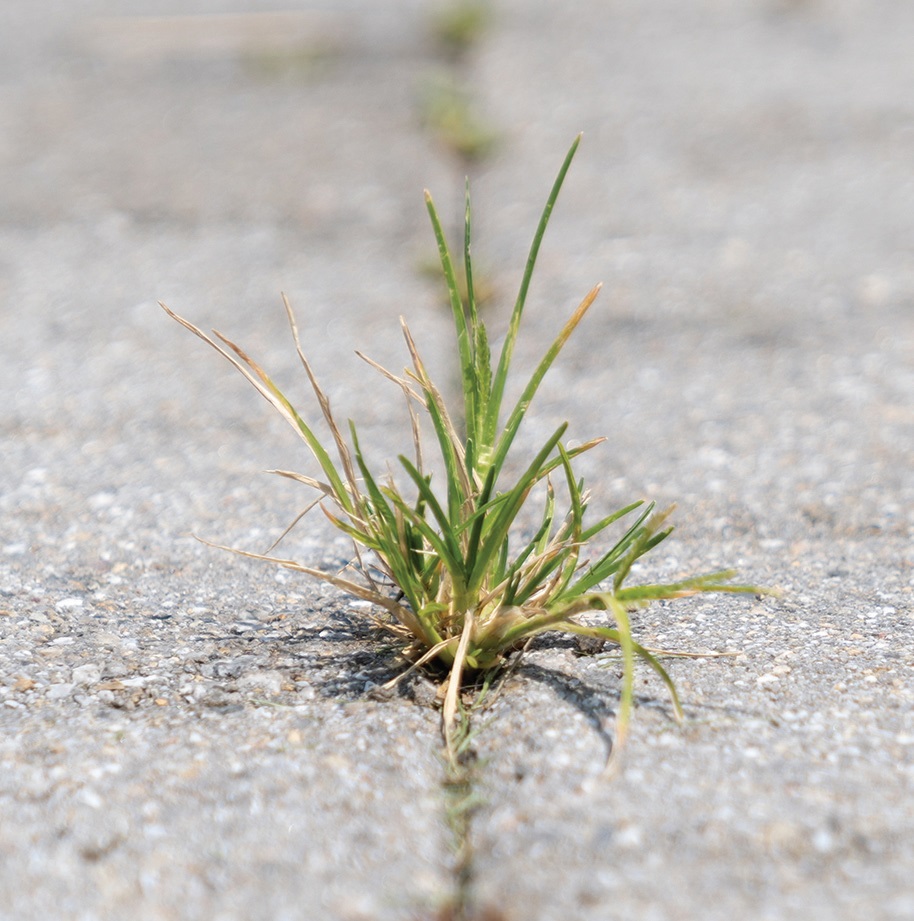Sidewalk varnish
Evan Zabawski | TLT From the Editor June 2020
A physical problem sometimes needs a chemical solution.

Nurturing a lawn is a lot like looking after a large hydraulic oil reservoir; if you stay on top of the maintenance, it will provide pleasing results. On the other hand, the problems inevitably seem to happen right where you least desire, a conclusion I came to while fighting a persistent lawncare issue.
The fight started with a bare spot right beside my front steps in plain view of everyone using the front door. Why grass did not grow there was a combination of shallow topsoil on top of the gravel fill to support the concrete walkway, and being in a corner off the side of the steps that blocks what little sunlight manages to peek around the north-facing porch. These are not conditions conducive for a lush lawn.
The simple solution would have been to simply put a flower bed in its place, but I do not have the inclination to tend to anything horticultural that must be done manually. I like the simple pleasure and efficiency of pushing a lawnmower rather than weeding and trimming with my hands. Plus, I am stubborn.
I won this fight by adding dirt and sodding it with shade-tolerant grass, but I have an ongoing fight with grass that grows where it is not desired. The worst offender is the tiny gap between the end of my driveway and the sidewalk, and some cracks in my paving stones’ grout. I wondered how I could have such a problem with grass growing where it should not, when it needed so much help to grow where it should.
The answer is partly because gaps and cracks retain moisture longer than soil. Concrete and asphalt act like slow-release sponges, just like mulch, providing much-needed moisture during dry spells. Another factor is their heat absorption from sunlight that keeps the soil beneath warmer than the neighboring lawn.
The curiouser aspect is why the grass in the cracks and gaps usually has broader blades than the rest of the lawn. This type of grass is usually crabgrass or quackgrass. Crabgrass not only thrives in heat, but its seeds are quite small and can penetrate even the smallest cracks, whereas quackgrass is a perennial weed that can survive due to its ability to regrow from a small piece of root remaining after the exposed portion has been pulled out of the crack. Upon learning these reasons, I could not help but notice the parallel with varnish in a hydraulic system— unwanted grass is ‘sidewalk varnish.’
Varnish thrives in heat and generally favors deposition where you would least desire, which also is in areas of tight clearance, like valve spools and bearings. Varnish does not drop out as greatly in the wide expanse of the reservoir bottom, mostly out of harm’s way, where one might prefer.
Much like quackgrass, if you do not completely remove a varnish deposit it will continue to deposit in the same location, not because it grows, but rather because metal-active, polar additives will not be able to bond with the metal surface to provide a protective layer.
Lastly, varnish mitigation strategies based on filtration are like dealing with this unwanted grass using a string trimmer (a.k.a., edger, weed whipper, whipper snipper, weed eater, weed wacker—I love how this tool is known by so many names). Trimming the grass away is a temporary fix that may remove it from view but does not mean the roots have been eradicated or that the grass will not return, and adding such filtration to a hydraulic system may decrease the insoluble level detected by oil analysis, but it does not mean that the varnish also has been stripped or is not going to reoccur.
I have often used the analogy that adding filtration variants of varnish mitigation are like bailing a leaking boat with a bigger bucket. While you may feel like you are getting ahead of the problem, it is far better to stop the leak first.
One way to stop unwanted grass from growing, or to stop insolubles from forming varnish, is in the form of chemical solutions. As there are safe, eco-friendly herbicides, so are there safe, solubility enhancers to deal with insolubles. Just ask an expert to recommend the right one. Off to the local garden center I go!
Evan Zabawski, CLS, is the senior technical advisor for TestOil in Calgary, Alberta, Canada. You can reach him at ezabawski@testoil.com.